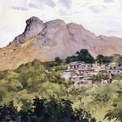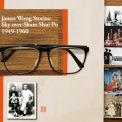The establishment of Shaw Studios could be deemed as a symbol for the great change of Shaw’s production pattern: The focus on low-budget production in the past gradually turned to big-scale streamline production. During its early stages of operations, the studio had the capacity to support the concurrent filming of six films. “Southern Screen” reported that the studio had, “1200 members of staff distributed across 25 different sections, working day and night in order to supply the entertainment business worldwide…the studio has adopted flat structures, and those occupying the most land…are the six huge filming studios each with a make-up room on the side…The six huge studios, along with their own costume room, make-up room, store room and other affiliated organizations, are all independent from one another so that the filming of six films can take place at the same time.” This industrial scale “offers a very beneficial competitive advantage. And only with these facilities can the plan of making 30 Mandarin films and 15 Cantonese films this year be realized.” To support these huge production teams and these intensive streamline production lines, the studio is equipped with “dubbing studio, screening room, film processing and printing room, wood-work room and tap-water tower which are all built with state-of-the-art design and fitted with modernized machinery and equipment. In addition to that, there are also the canteen and staff quarters. The studio is totally self-sufficient, and the daily needs of the staff can be taken care of inside the studio. On average, over 30 main actors and over 1000 technical staff are intensely working inside the studio everyday to make Mandarin, Cantonese and Amoy-dialect films to provide entertainment and enjoyment for 450,000 people of various nationalities in Asia, and to provide films for screening in over 100 cinemas and big amusement parks under the Shaw banner. ” Production and distribution on such a huge scale were rarely seen in the Chinese movie circle.
From 1962, Shaw Studios not only continued to expand the land used for filming, it also gradually introduced the production of color and widescreen films, allowing Shaw to claim the status as Hong Kong’s most advanced film production base. Indeed, from 1964 onwards, after all 12 filming studios became operational, Shaw Studios operated like a large-scale factory, adopting streamline production day and night. Each section carried out its own duties on this intensive production line, and scriptwriters, directors, actors and other staff grouped together to form a number of production teams. They worked together to accomplish the production plans of the year. Everything from filming to post-production including film processing and editing could be done inside the studio. In December 1966, Shaw’s announced its big plan to produce 45 films in the following year, so as to try and push the big studio system to a peak. Until 1985 when Shaw Studios actually reduced its production, films produced by Shaw Studios tallied as high as 800 works. Shaw’s repertoire included a wide variety of genres, such as period drama, Huangmei opera, martial arts, erotic and humour films. Shaw’s status equaled the “Hollywood of the East”.









